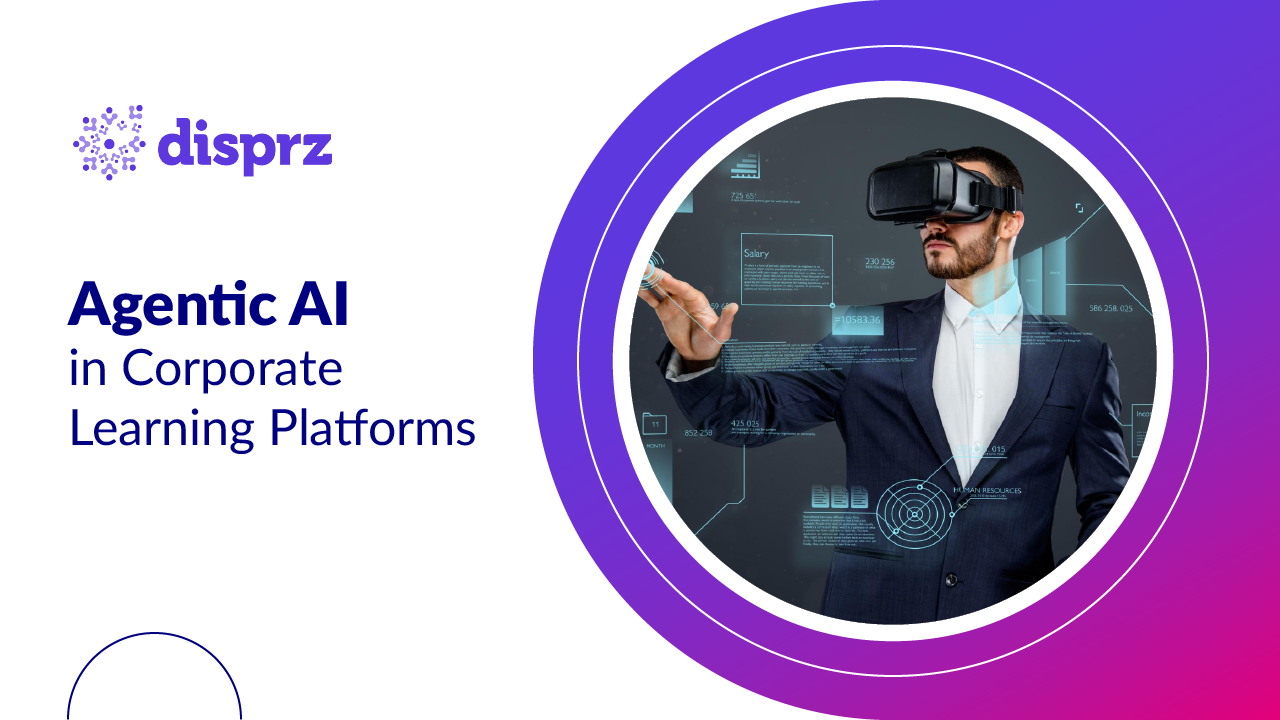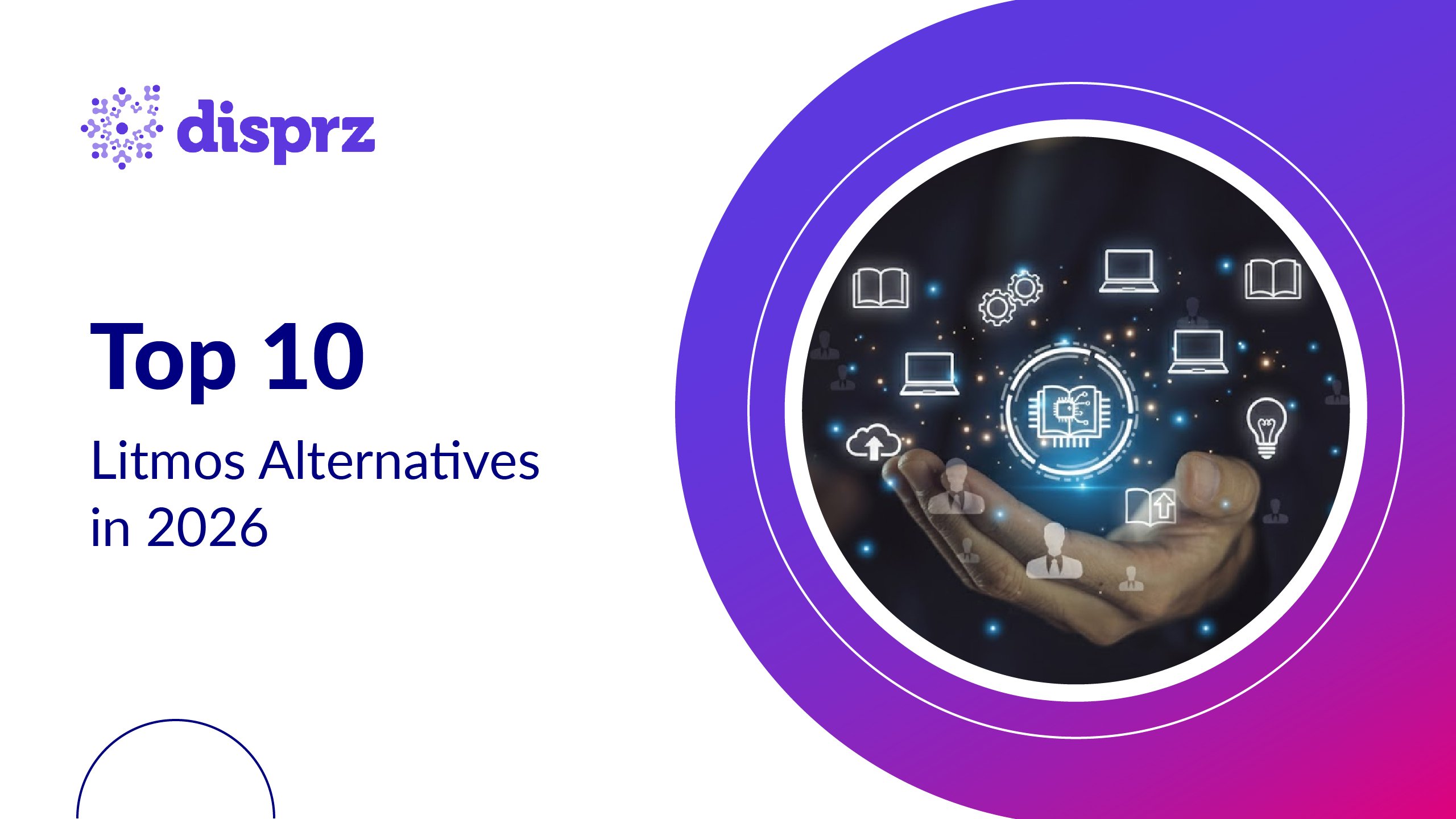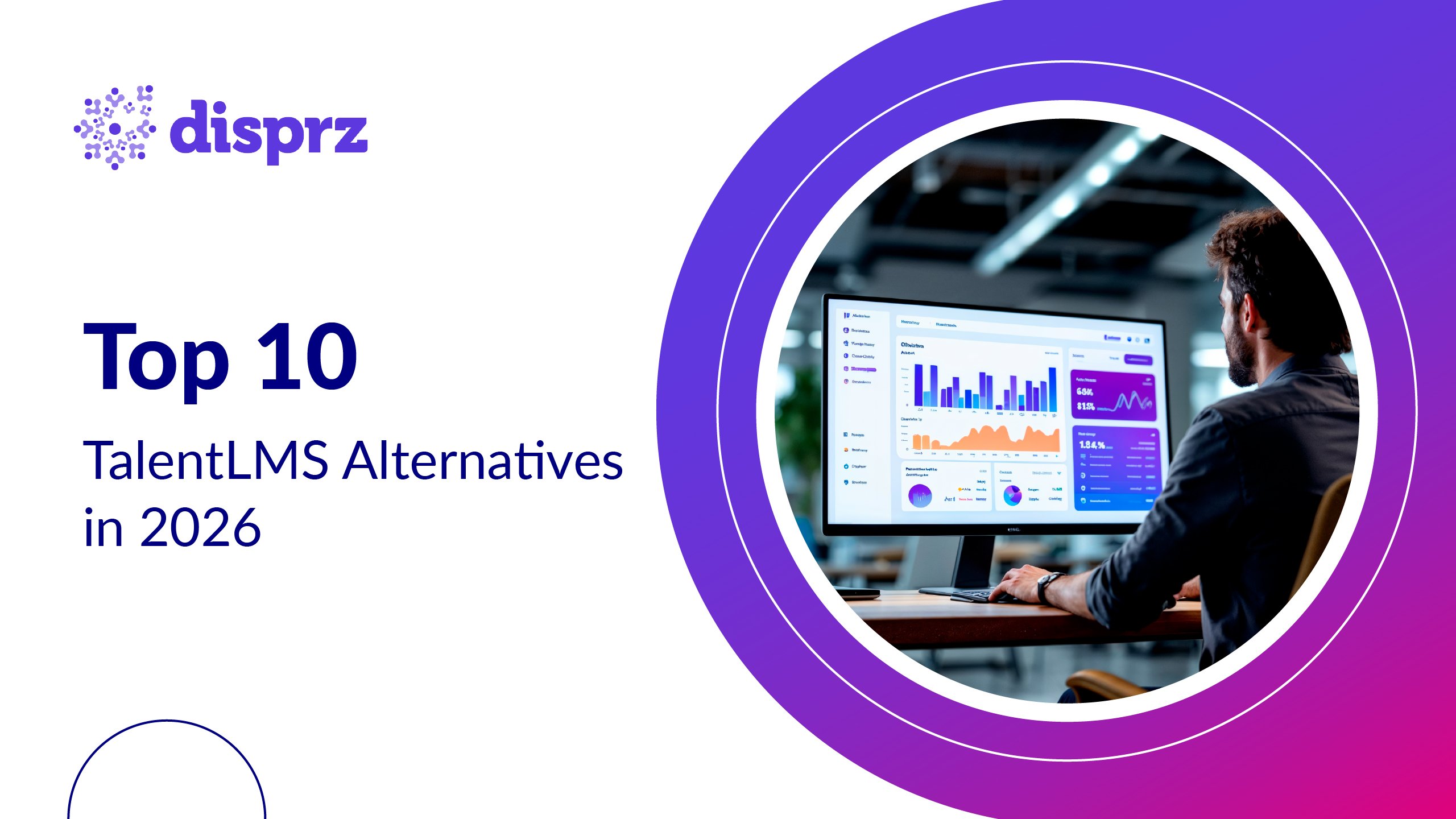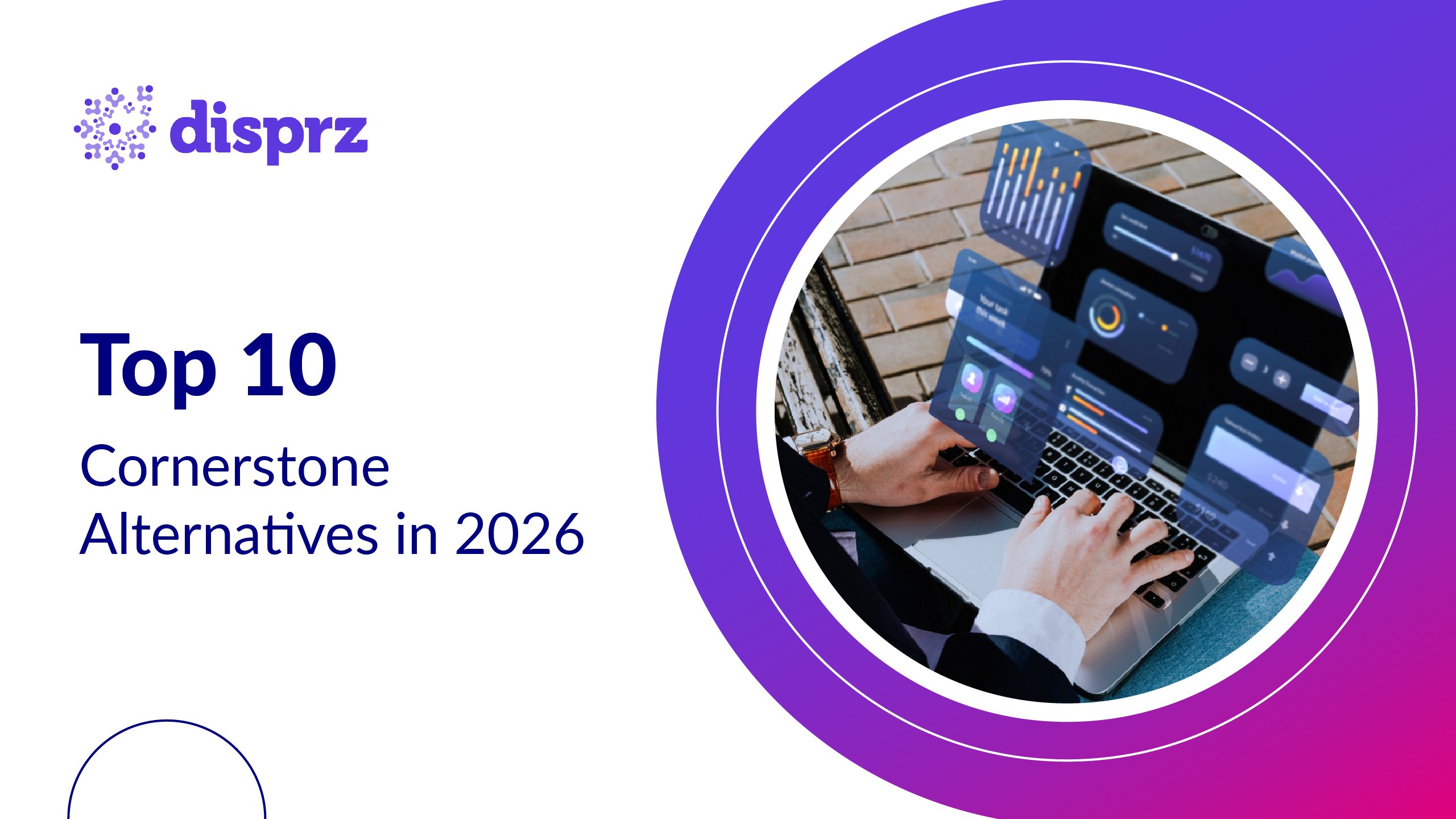Corporate learning platforms have come a long way. What began as basic Learning Management Systems (LMS) for compliance has evolved into Learning Experience Platforms (LXPs) that prioritize personalization and engagement. Now, we’re on the brink of the next revolution: Agentic AI learning platforms.
Agentic AI marks a seismic shift in workplace skilling. Unlike traditional AI-powered LXPs that curate and recommend, autonomous learning platforms can sense skill gaps, design adaptive pathways, and proactively guide employees; without waiting for HR or L&D intervention. Beyond efficiency, they bring intelligence, context-awareness, and the ability to continuously learn from enterprise data. This makes learning not just a support function but a driver of competitive advantage.
For enterprises, this next-gen transformation is not optional. The pace of disruption, the half-life of skills, and the demand for hyper-personalization make next-gen corporate learning a business-critical priority. Organizations that fail to adopt risk falling behind in innovation, talent retention, and workforce agility. We’ll explore the journey from LMS to LXP to Agentic AI, highlight limitations of existing models, and show how autonomous AI training will reshape workforce development.
What is an LMS and its Limitations
For decades, the LMS was the default tool for enterprise training. It brought structure and scale to learning but was designed for administration more than impact. While it fulfilled compliance needs, it struggled to keep pace with the evolving demands of modern learners and dynamic businesses.
Compliance-first Systems
The LMS was designed primarily for one purpose: tracking compliance. It ensured employees completed mandatory courses, and managers had reports for audits. While essential, LMSs were never learner-centric. They functioned like digital filing cabinets, hosting courses, tracking completions, and generating reports.
Because of this compliance-first DNA, they often lacked innovation, offering rigid structures that made learning more of a formality than a growth experience.
Limited Personalization and Engagement
An LMS offers the same courses to everyone, regardless of skill level, role, or aspiration. Learners often see it as a “check-the-box” exercise, not as a tool for growth. Engagement remains low, and content consumption feels forced. As a result, LMSs fail to drive real capability-building in a fast-changing business landscape.
This one-size-fits-all approach meant employees rarely found content relevant or inspiring, leaving a gap between training delivered and skills truly developed.
The Rise of LXPs
As enterprises realized the shortcomings of LMSs, a new generation of platforms emerged; the Learning Experience Platform (LXP). Unlike compliance-driven systems, LXPs placed the learner at the center, offering flexibility, personalization, and more engaging content formats. They aimed to transform learning from a static activity into a continuous, self-directed experience that aligned better with modern workplace expectations.
Personalized, AI-curated Experiences
To overcome the rigidity of LMSs, AI-driven LXPs emerged. These platforms use recommendation engines (similar to Netflix or Spotify) to suggest courses based on user behavior, interests, and role requirements. LXPs brought learning closer to the employee’s daily workflow.
By tailoring suggestions to individual needs, they created a sense of ownership and choice, encouraging employees to engage more actively in their learning journeys.
Social and Microlearning Support
LXPs also introduced social features such as discussion boards, peer learning, and user-generated content. Combined with microlearning modules, LXPs created shorter, engaging learning moments that fit into busy schedules.
This social, bite-sized approach made learning more collaborative, accessible, and aligned with how people consume information in their personal lives.
How LXPs Improved Engagement
By giving learners autonomy and access to curated content, LXPs significantly improved adoption and engagement rates. They democratized learning, made it continuous, and connected it with business goals. However, LXPs still rely heavily on HR and L&D teams to set strategy, define priorities, and design pathways.
The shift from mandatory to self-directed learning was a major leap, but the reliance on human intervention kept LXPs from becoming fully scalable and future-proof.
Limitations of LMS and LXP in Today’s Business Context
While LMSs and LXPs marked important milestones in enterprise learning, both models fall short in today’s volatile business environment. Skills are becoming obsolete faster than ever, and organizations need tools that can anticipate, not just react. Enterprises are realizing that even the best LXPs cannot fully address the demands of speed, scale, and proactivity required for future-ready learning.
Reactive Rather than Proactive Learning
Both LMSs and LXPs operate reactively. They respond to needs once they are identified but cannot autonomously detect skills gaps or act without human input. In an era where skills requirements change overnight, reactivity is no longer sufficient.
This delay between identifying gaps and delivering solutions often results in employees falling behind, impacting productivity and agility.
Dependence on HR and L&D Push
Even with LXPs, learning remains largely orchestrated by HR and L&D. Employees receive nudges, but the system does not proactively adapt to business needs. Leaders must manually define competencies, assign learning paths, and monitor progress. This limits scalability in large, complex enterprises.
As a result, the responsibility for driving learning falls disproportionately on HR teams, reducing efficiency and slowing down the pace of capability building.
What is Agentic AI in Learning?
As enterprises move beyond LXPs, the next frontier is Agentic AI; a breakthrough that shifts learning from recommendation to autonomy. Unlike earlier platforms, Agentic AI doesn’t just support learners; it actively drives their growth by taking intelligent, independent actions. This new paradigm is built on self-directing systems that continuously evolve, making learning proactive, adaptive, and aligned with business needs.

Definition: Autonomous Learning Agents
Agentic AI refers to AI systems that act as autonomous agents; capable of reasoning, deciding, and acting without constant human supervision. In learning, Agentic AI platforms don’t just recommend; they act. They map skills, detect gaps, suggest pathways, and even adjust goals dynamically.
This autonomy makes them more like digital learning coaches, providing guidance and interventions at the right moment without waiting for HR teams to trigger them.
Role of Learner Personas and Adaptive Pathways
Agentic AI builds learner personas by analyzing job roles, career aspirations, behavioral data, and learning preferences. It then creates adaptive learning pathways tailored to individuals. For example, two employees in the same role may receive different journeys based on their performance and aspirations.
Such personalization ensures learning is not only relevant but also motivational, helping employees see a clear connection between training and career growth.
Difference from Traditional AI
Unlike rule-based or recommendation-only systems, Agentic AI is proactive. It doesn’t just process inputs; it makes autonomous decisions, simulates scenarios, and continuously evolves based on feedback. Traditional AI in LXPs is supportive. Agentic AI is directive and transformative.
This shift from passive assistance to active direction is what makes it a true game-changer for enterprise learning.
How Agentic AI Transforms Corporate Learning
The introduction of Agentic AI learning platforms is not just an incremental upgrade; it’s a fundamental rethinking of how enterprises build skills. These platforms move beyond recommendations and act as independent agents, constantly scanning the business environment, learner behavior, and skill requirements to drive outcomes. The transformation lies in their ability to combine intelligence with action, ensuring learning is always one step ahead of organizational needs.

Autonomous Skills Gap Detection and Automated Personalized Recommendations
With a skills taxonomy as its backbone, Agentic AI constantly scans enterprise data (performance metrics, market trends, role requirements, etc.) to identify emerging skills gaps. It then automatically recommends courses, projects, and mentors, ensuring employees remain future-ready. This shift eliminates lag time, allowing organizations to respond to emerging business challenges with agility and precision.
Real-time Personalization at Enterprise Scale for Every Learner
Where LXPs offer personalization through curated content, Agentic AI takes it further. It dynamically adapts pathways in real time, adjusting based on learner behavior, role changes, or evolving business needs. This allows for true next-gen corporate learning at enterprise scale.
Learners experience journeys that evolve with them, making training far more relevant, engaging, and impactful.
Proactive Nudges for Behavioral, Leadership, and Cross-functional Skills
Agentic AI doesn’t just focus on technical upskilling. It can provide proactive nudges for behavioral shifts, leadership development, and cross-functional collaboration. For example, if an employee aspires to move into management, the system may suggest leadership simulations, mentorship opportunities, and micro-courses; all autonomously. By extending into softer, human-centric skills, it builds well-rounded professionals who can thrive in complex business environments.
LMS vs LXP vs Agentic AI: A Comparison
As learning technologies have evolved, each stage has solved certain challenges while leaving others unresolved. LMSs brought structure but lacked engagement, LXPs enhanced personalization but remained reactive, and now Agentic AI introduces autonomy and proactivity. Comparing LMS vs LXP side by side helps enterprises see how the value proposition has shifted; and why preparing for Agentic AI is essential for future workforce readiness.
Features, Benefits, and Limitations
-
LMS: Compliance-driven, centralized control, limited personalization. LMSs are reliable for tracking and reporting, but they struggle to motivate learners or adapt to diverse needs.
-
LXP: Personalized, engaging, AI-curated, social and microlearning-enabled. LXPs expanded learning beyond compliance, offering flexibility and relevance, but they still depend heavily on HR and L&D intervention.
-
Agentic AI: Autonomous, proactive, skills-first, continuously adaptive, business-aligned. Agentic AI not only curates content but actively drives learning outcomes by sensing gaps, building pathways, and personalizing at scale.
This evolution shows a clear trajectory from administration to engagement, and now to intelligence-led autonomy.
Where Agentic AI Outperforms
Agentic AI outperforms by eliminating manual bottlenecks. It creates autonomous AI training ecosystems that learn, adapt, and evolve with both the individual and the enterprise. This makes learning not just a support function but a driver of strategic advantage. Unlike LMSs and LXPs, it scales personalization effortlessly, aligns skills development with business goals, and ensures employees remain future-ready in a constantly changing environment.
Preparing for the Agentic AI Era
Shifting to Agentic AI learning platforms is not just a technology upgrade; it’s a strategic transformation. Organizations need to lay the groundwork so that autonomous learning systems can thrive and deliver maximum impact. This preparation involves aligning skills frameworks, rethinking career development, and ensuring seamless integration with enterprise-wide systems. Enterprises that start early will be better positioned to lead in the AI-powered learning economy.
Skills Taxonomy Mapping as the Foundation
Enterprises must start with a robust skills taxonomy; a structured map of roles, competencies, and capabilities. This becomes the DNA for Agentic AI systems to detect gaps and build personalized pathways. Without this foundation, AI agents lack the clarity to make precise decisions. A strong taxonomy ensures learning remains business-relevant, measurable, and scalable across diverse functions.
AI-driven Career Pathways for Employees
By aligning skills taxonomy with employee aspirations, Agentic AI can create AI-driven career pathways. These show employees the skills they need to move forward, while giving organizations visibility into workforce readiness. This transparency motivates employees by showing them a clear, data-backed roadmap to growth. It also helps leaders plan succession pipelines with far greater accuracy and confidence.
Integrating Agentic AI with Enterprise Systems
To unlock full potential, Agentic AI learning platforms must integrate seamlessly with HRIS, talent management, and business systems. This ensures decisions are not made in isolation but in alignment with enterprise priorities and performance outcomes. Integration also allows learning data to influence performance management, recruitment, and workforce planning; creating a holistic talent intelligence ecosystem.
Conclusion
The journey of corporate learning has been one of constant reinvention. From LMSs that ensured compliance, to LXPs that enhanced engagement, each stage addressed pressing challenges of its time. But the pace of change in today’s world demands something more intelligent, proactive, and future-ready; this is where Agentic AI learning platforms come in.
The journey from LMS to LXP to Agentic AI is not just technological; it’s cultural. LMSs built compliance. LXPs enhanced engagement. But Agentic AI learning platforms will redefine the enterprise learning and skilling platform by making it autonomous, proactive, and adaptive. They bring together the power of learner personas, adaptive learning, and skills taxonomy to deliver experiences that are deeply personalized and business-aligned.
As the half-life of skills shrinks, the need for autonomous learning platforms grows urgent. Forward-looking enterprises must prepare today; mapping skills, rethinking career pathways, and integrating AI into the very fabric of learning. Those who embrace Agentic AI will not only keep pace with disruption but turn learning into a true competitive advantage. Discover how Disprz is preparing enterprises for the Agentic AI era.
FAQs
1) What is Agentic AI in corporate learning platforms?
Agentic AI in learning refers to autonomous AI systems that can detect skill gaps, design adaptive learning pathways, and guide employees proactively; without relying on HR or L&D for every intervention. These platforms act as self-driving learning coaches, continuously monitoring progress, recommending courses, and nudging employees toward skill mastery in alignment with business goals.
2) How is Agentic AI different from traditional AI in learning?
Traditional AI in LXPs mainly recommends content based on past behavior or role requirements. Agentic AI goes further: it actively makes decisions, adapts pathways in real-time, and predicts emerging skill needs. This proactive intelligence enables autonomous AI training at scale, ensuring learning interventions are timely, relevant, and personalized to both the individual and the organization.
3) Can existing LMS or LXP platforms evolve into Agentic AI systems?
Yes. With the right skills taxonomy, AI-powered analytics, and system integrations, LMS or LXP platforms can evolve into autonomous, Agentic AI learning ecosystems. However, this transformation requires shifting from a reactive, content-driven approach to a proactive, intelligence-driven model that continuously adapts to learner behavior and organizational priorities.
4) What benefits do Agentic AI learning platforms provide enterprises?
They deliver continuous skills readiness, real-time personalization, reduced L&D dependency, improved employee engagement, and strategic alignment with business goals. Enterprises can also leverage these platforms to identify talent gaps early, build adaptive career pathways, and ensure workforce capabilities remain competitive in rapidly evolving markets.
5) How should HR and L&D leaders prepare for Agentic AI?
Leaders should start by mapping skills, investing in AI-driven analytics, building robust data pipelines, and piloting autonomous AI training models. This preparation ensures that when Agentic AI is implemented, it can fully leverage learner personas, adaptive learning, and skill taxonomy to create impactful, scalable learning experiences that directly contribute to business outcomes.









